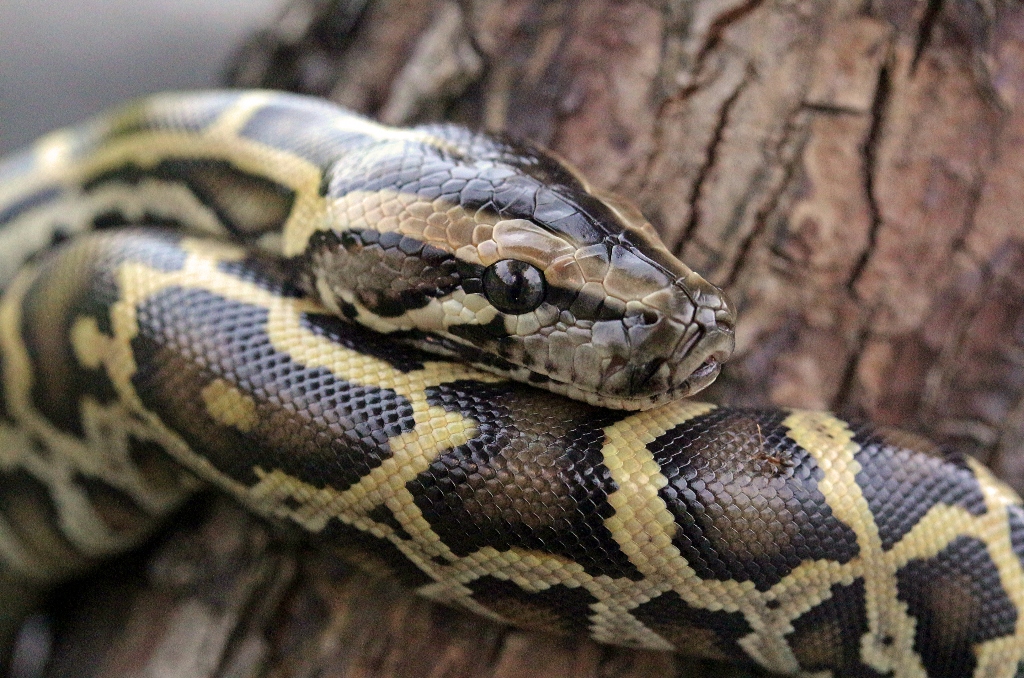Florida Python Challenge – Burmese Python. Photo: Vince Adam/Shutterstock.com
The winner of this year’s Florida Python Challenge is officially announced.
Ronald Kiger won the $10,000 grand prize. During the 10-day hunt, which was intended to raise awareness of the damage that Burmese pythons cause to the ecology, Kiger removed 20 pythons from the Florida Everglades. He finished exactly second to the big prize winner the previous year.
During a meeting on Tuesday morning in Duck Key, representatives from the Florida Fish and Wildlife Conservation Commission declared Kiger’s victory. More than eight hundred participants from thirty-three states and Canada took up the challenge this year, and hunters took 195 Burmese pythons out of the wild.
The three contest categories—novice, professional, and military—were each given a portion of the remaining prize money. Donna Kalil and Kiger were tied by just one python. In the professional category, Kalil, a contractor for the South Florida Water Management District, won $2,500 for his catch of nineteen pythons.
Quentin Archie got a $1,000 reward for catching the longest python in this category, measuring 8 feet 11 inches (2.7 meters), while Marcos Rodriguez won a $1,500 prize for catching 16 pythons in the professional category.
With 16 Burmese pythons, Thomas Hobbs won $2,500 for winning the novice category. Dennis Krum caught the longest python of the competition, measuring 9 feet 11 inches (3 meters).
In the military category, Antonio Ramos received $1,000 for catching the longest python in the group, measuring 9 feet 7 inches (2.9 meters), while Jeff Lince won $2,500 for catching five pythons.
The task took place in the middle of August. The hunters’ job was to dispatch the Burmese pythons in a humane manner and deliver the carcasses to any one of the three South Florida check stations for the event.
The goal of the challenge wasn’t limited to hunters competing for a piece of the roughly $25,000 in rewards. It also helped to promote knowledge of the risks posed by Burmese pythons, including their negative effects on native snake populations, their ability to transmit diseases to other native animals, and their high mercury content, which makes them unsafe for ingestion by humans.
The chairman of the Florida Fish and Wildlife Conservation Commission, Rodney Barreto, stated in a news release that “since 2017, over 14,000 pythons have been successfully removed by FWC and South Florida Water Management District contractors.” “By removal and awareness, this collective effort continues to have a direct positive impact on the Everglades and our native wildlife.”
In comparison to last year, there was a little decrease in the competition this year. More than a thousand hunters took part in 2023, and 209 pythons were taken out.
The South Florida Water Management District and hunters under contract with the state’s wildlife commission work year-round to eradicate the invasive pythons from the wild. Since a female python can lay anywhere from 50 to 100 eggs at a time, the competition is held in August, during the hatching season. About 22,000 pythons have been removed from the state since 2000, according to the wildlife ministry.
Stories that matter are our priority. At Florida Insider, we make sure that the information we provide our readers is accurate, easy-to-read, and informative. Whether you are interested in business, education, government, history, sports, real estate, nature or travel: we have something for everyone. Follow along for the best stories in the Sunshine State.

Born and raised in South Florida, Krystal is a recent graduate from the University of Miami with professional writing experience at the collegiate and national news outlet levels. She’s a foodie who loves all things travel, the beach, & visiting new places throughout Florida.

